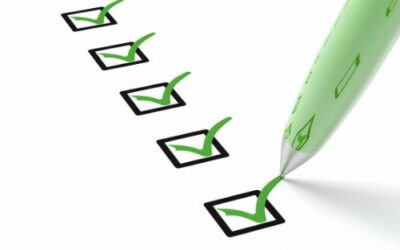
“You can’t build a great building on a weak foundation. You must have a solid foundation if you’re going to have a strong superstructure.” — Gordon B. Hinckley
When it comes to asset management, this couldn’t be truer. An enterprise’s asset register forms the foundation of its asset management system. As you’ve read above, to set up a robust asset management system (the building), and to expand it, you need a well-built asset register (the foundation).
There are many ways asset tracking saves you money. But purchasing professional asset register software is not the only requirement here. You also need to know how to build an asset register the right way. In a nutshell, your company must have a proactive approach to using and updating its asset register as frequently as possible. Continue reading this blog post as we elaborate further.
Best Tips for Building an Effective Asset Register
- Group assets for better organisation
- Use logical, easy-to-read asset names
- Record essential details for every asset
- Every team member should contribute
- Update asset register as frequently as possible
Group Assets for Better Organisation
Getting asset management software is a huge upgrade from using conventional asset tracking methods like spreadsheets. But even then, there is a level of organisation you must maintain for enhanced asset management. Put simply, the better you organise your asset register, the more time and money you save.
Rather than recording all your assets in one big list, it’s better to create categories and sub-categories. This will not only make your asset register look more professional, but it’ll save you a lot of time when looking up an asset in the register and reduce the chances of the occasional human error.
How do you group assets? You could group them according to departments, asset types, value, location and a few other criteria. Here’s a brief guide on asset categories and sub-categories.
Group assets according to the asset type
- Fixed assets
- IT assets
- Digital assets
- Tools and equipment
- High-value assets
- Vehicles
Group assets according to locations
- Building floors e.g., ground floor assets, floor 1 assets
- Different branch/site locations
Group assets according to maintenance needs
- High maintenance assets e.g., printers, vehicles
- Low maintenance assets e.g., office furniture
Use Logical, Easy-to-read Asset Names
Rather than recording assets with random names like ‘Printer Reception Desk’ or ‘Branch Manager telephone,’ you should use established naming conventions to identify all your assets. Naming all your assets in the same format makes finding an individual asset really easy and your asset register will look consistent and professional.
For instance, if you’ve decided to name assets according to their location in the workplace or the employee they’re assigned to, make sure that location or employee name is mentioned in the same way for all assets.
It’s advised to keep the location or employee name first when recording asset names in the asset register. So it should always be ‘Tom’s iPhone’ or ‘Kate’s keyboard’ in the case of employee-associated asset names. If you’re naming assets according to their location, you’d name assets in this format, ‘Reception Desk Printer’ or ‘Conference Room AC.’
Record Essential Details for Every Asset
When you’re new to asset tracking software, it’s easy to overdo it by recording even the most inessential details into the asset register since it’s so fun and convenient to use. But with time, you might find yourself getting less enthusiastic and not recording all the essential details for an asset.
The key is to maintain a consistent approach towards tracking asset details where you record only the information you will need, and keep recording it for every asset in the future. This brings us to the question: What to add to your asset register? This includes every detail from the date of purchase, cost of purchase, warranty info to its location and last maintenance date.
Every Team Member Should Contribute
One of the greatest features asset register software has to offer is its shareability. Multiple users can access the application through mobile apps or a web portal to read and record asset information. Being able to share asset tracking responsibilities with your team is what makes asset tracking software such a great upgrade from conventional asset tracking. So make sure you’re capitalising on it!
Your employees can identify assets on the register and update their information in real-time. For instance, if some equipment was moved from site A to site B, the employee who took it can record it in the register. Similarly, when an asset needs maintenance, the first employee to discover the need for maintenance could report it to the managers through the asset register.
This way, every employee can play a proactive role in asset management, which means an always up-to-date asset register and less responsibility on the managers.
itemit’s Asset Register Software
itemit’s asset register software is one of a kind, and should be your go-to option if you want to build a great asset register with ease. It’s easy to use and effective at helping you track your assets.
You can scale itemit and use it to track different types of asset with multiple team members.
To find out more, you can contact the itemit team at team@itemit.com or fill in the form below to start your very own 14-day free trial.

Try itemit
Choose a better way to track
your assets.
Start your free 14-day trial now!

Keep Learning
itemit Blog
Tips, guides, industry best practices, and news.
Why Having An Accurate Asset Register Is Important
Why is having an accurate asset register so important and how can it help with equipment tracking? Read this post now to find out!
What To Include In Your Fixed Asset Register
What should you include in your fixed asset register and how can you make it work for you? Read this post now to find out!
What Exactly Is An Asset register?
What exactly is an asset register and will your chosen asset register format offer you everything you need? Read this post to find out!




